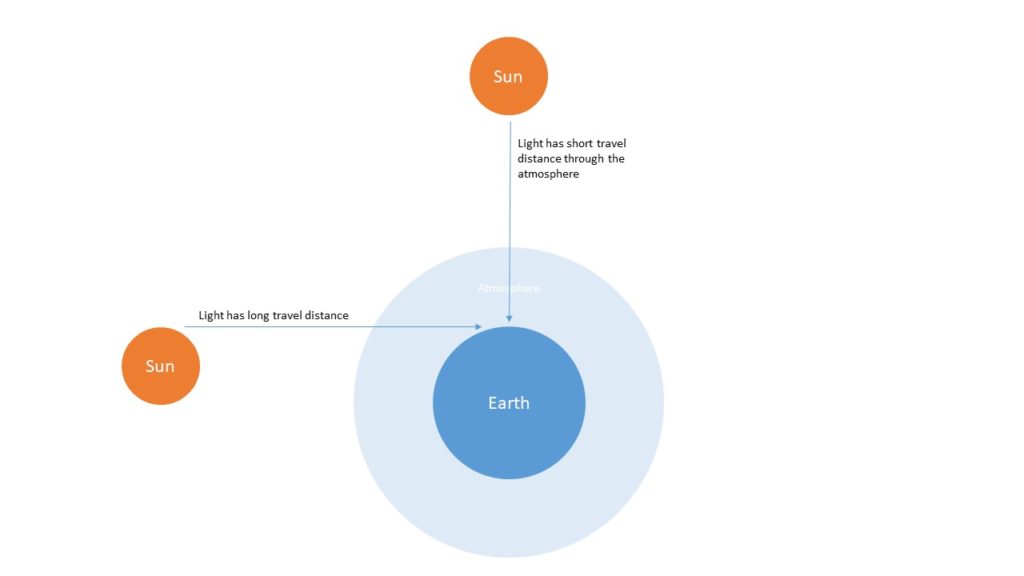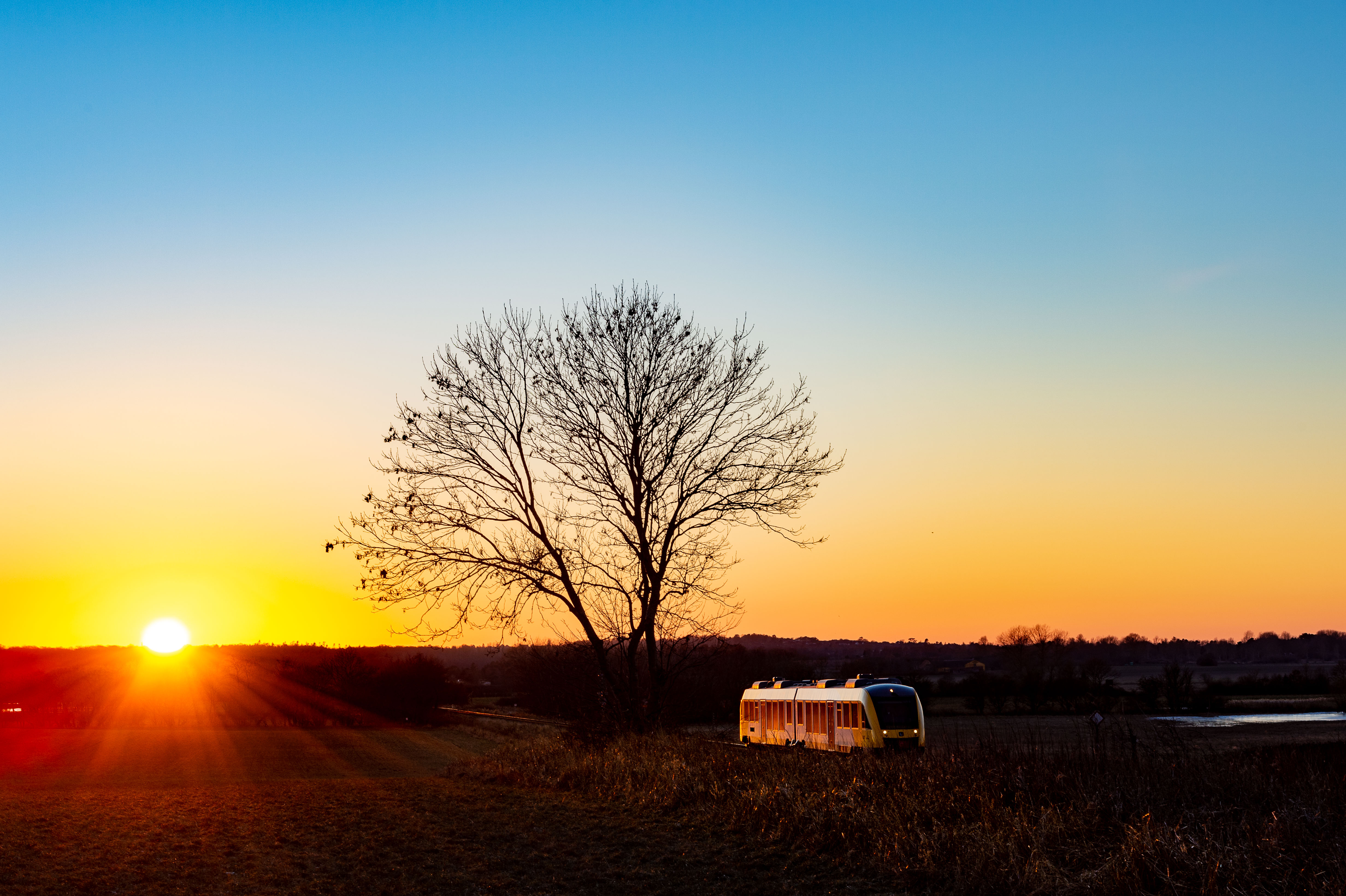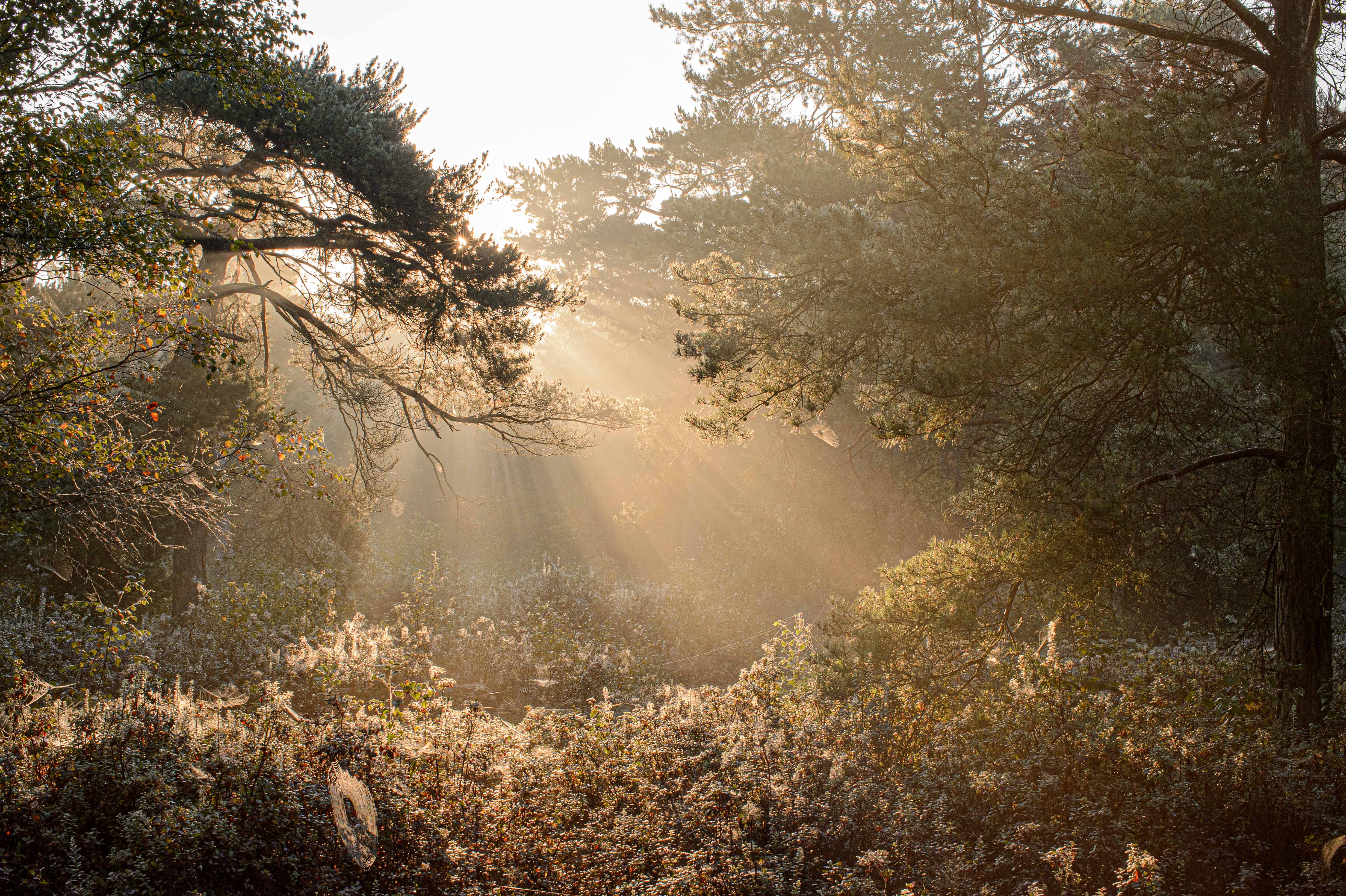The golden hour is the time just before or just after sunrise or sunset. The light is very different from the rest of the day, as the sunlight has to travel through the atmosphere “sideways” and hence travels a much longer distance than if the sun is right above your head in zenith during noon of day. The light during the golden hour has a much more red cast that the rest of the day, the light hits subjects sideways and it is much softer light with gentle transitions from light to dark.

In the image below, other than clearly having a red cast, the light travels sideways and lights up the side of the train to the right. During mid day the light would obviously have hit the top of the train which is a far less interesting view.

Also during the golden hour, the power of the sun is significantly reduced, and especially in the morning you can find that mist and traces of light are much more frequent than during the day:

So, in conclusion, if you can set the alarm clock to get up in the morning or you have the endurance to go shooting during sunset, you will capture images that are very different from what you can shoot during the day. The golden hour term is no exaggeration.
